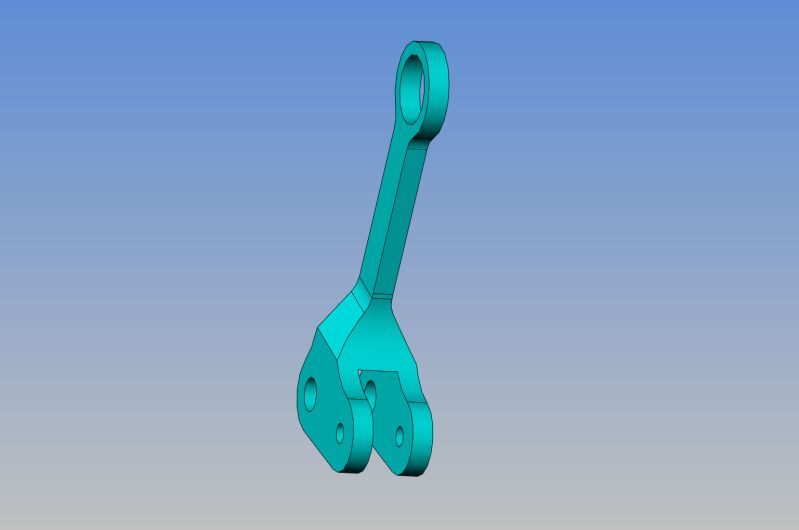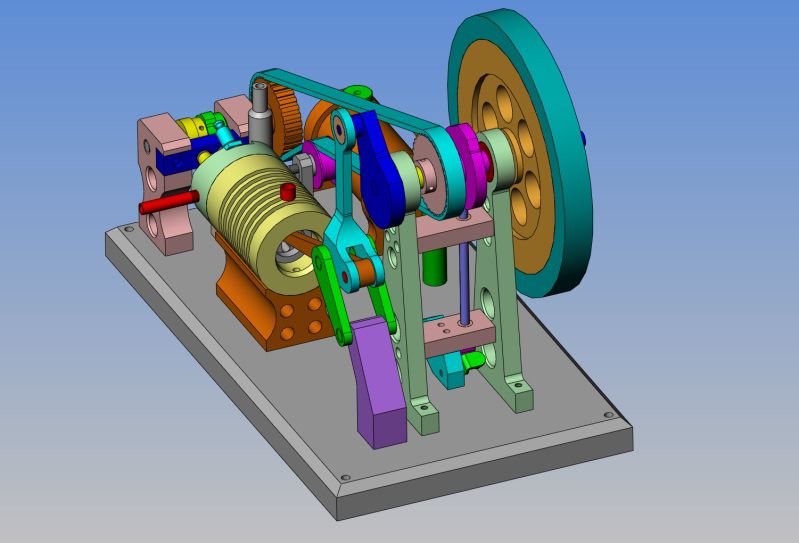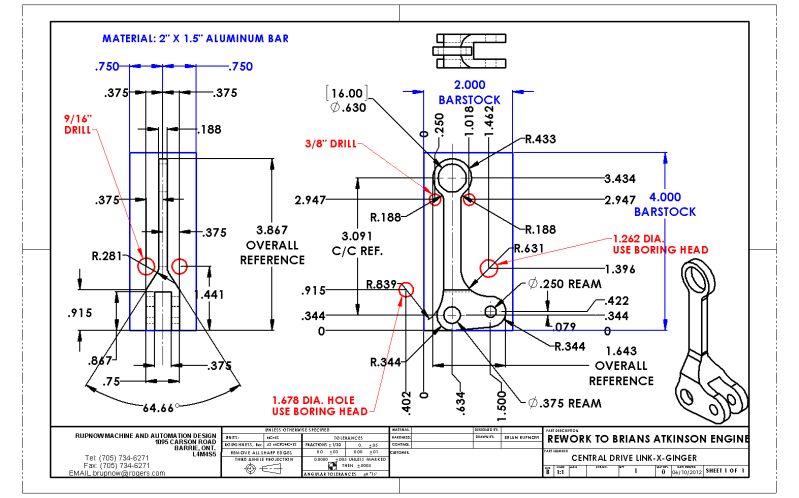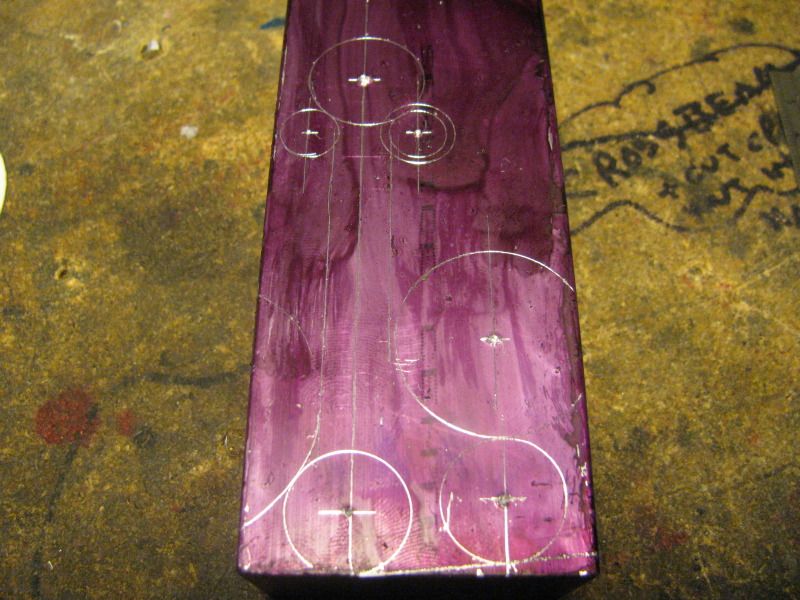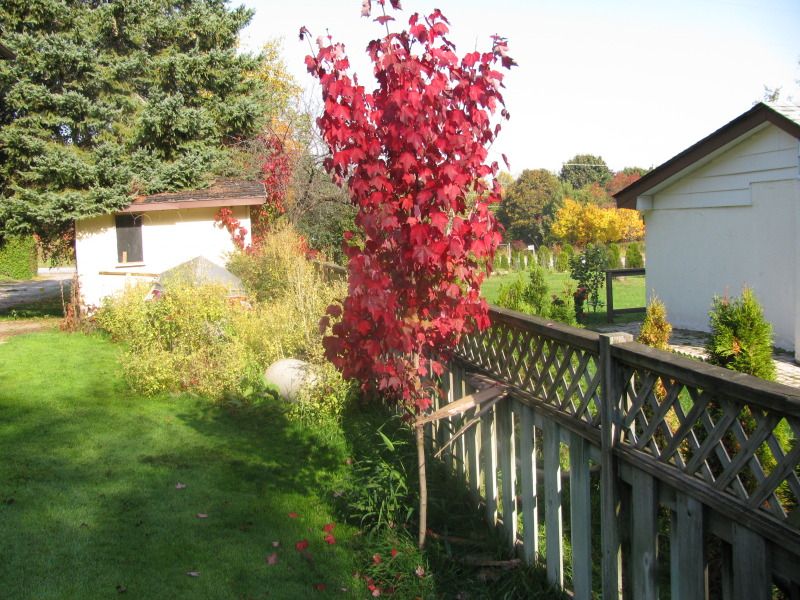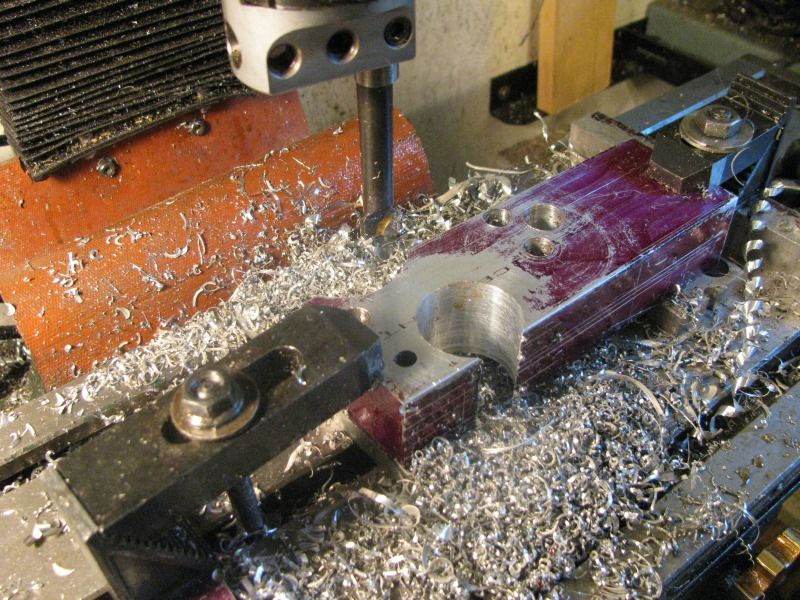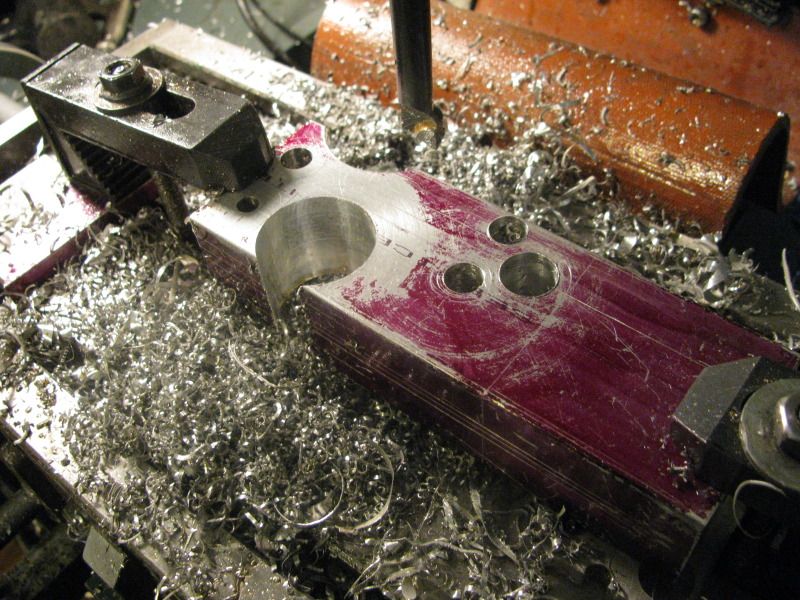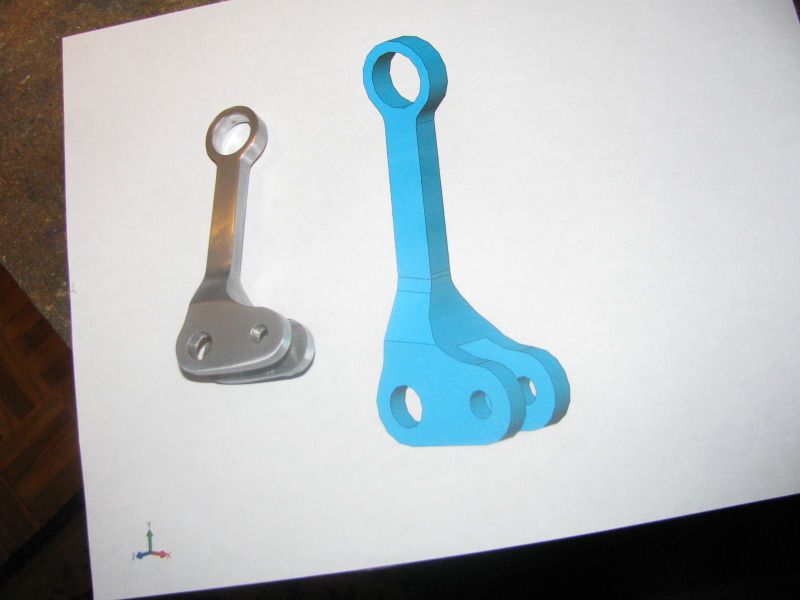Although the engine runs very well, I have discovered a flaw in the basic design. The linkages including the intermediate link, stationary link and the "throw" of the flywheel shaft are all offset from each other and from the connecting rod. (This can be seen very clearly in the very first post in this thread) At very low RPM as seen in the video, the engine behaves quite well, but as speed is increased, the offsets in the linkages create a "side throw effect" for lack of a better phrase, and the engine quickly becomes very noisy and acts as though it could quite possibly "throw a rod" or one of the links in an explosive way. I have been doing a bit of research to see how others have handled this, and found a very good video"Gingery Atkinson Cycle Engine" on Youtube. This engine was designed with all of the linkages centered about the connecting rod and cylinder, and I'm sure gives superior performance through a much wider RPM range. I am quite busy right now, in the middle of a conveyor design job, but when things slow down a bit, I am going to see if I can redesign some of the parts in my linkage train to be centered, similar to the ones in the video. Nothing other than these linkages and possibly the flywheel shaft have to be redesigned/remade so that should make a good follow up to this build.


